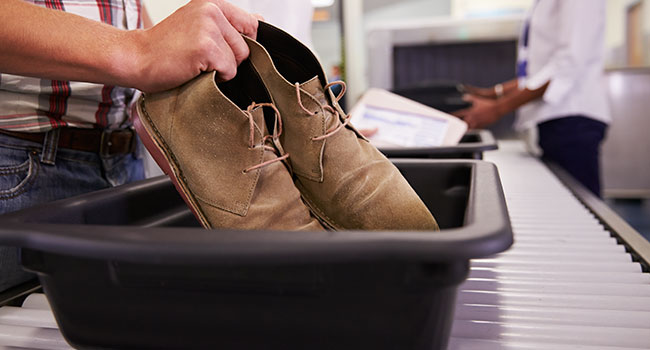
The Continued Evolution
- By Michael Lanzaro
- Jan 27, 2022
Nearly two years since the COVID-19 pandemic-grounded travelers globally, we are beginning to see a return to widespread air travel, now in full swing, with the exception of ongoing weather and staffing delays. As people begin to travel again, airports ensure the safety and security of those onboard – a task that poses challenges, chief among them is the need to balance high levels of security while also providing a positive airport experience.
There are many factors that can curtail a positive airport experience – many of which we have all experienced at some point, including long wait times, slow checkpoint screening, secondary screening and having to remove clothing and empty pockets. The pandemic has added an additional layer of anxiety for travelers such as the concern of being in close quarters with others for long periods of time, as well as the need to interact closely with security staff.
The TSA’s role in ensuring safety remains ongoing as threats evolve and passenger numbers grow. TSA has seized a record number of guns at security checkpoints this year, the highest number in 20 years. This number continues to increase, highlighting the real security challenge of finding concealed weapons and other threats on passengers.
Necessity is the Mother of Invention
Challenges in airport security can be a catalyst for change, and can be an opportunity for advancement in technology to improve airport screening while also improving the passenger experience. For example, the 9/11 attacks drove significant technological advancements in aviation checkpoint security to act as a deterrent against terrorism-driven risks to public safety. Introduced a decade ago, the millimeter-wave body scanner technology, now ubiquitous at airport checkpoints, was introduced following the 9/11 tragedy.
Another ritual is the familiar shoe removal. For the last two decades, TSA has required that passengers remove their shoes to have them screened by an X-ray machine. This security measure comes from an incident in December 2001, when a passenger smuggled an explosive device onto a plane in their shoe and attempted to detonate it during a flight from Europe to the United States.
The Airport of the Future
While technological advancements, such as enhanced checkpoint X-ray systems and automated bin return systems have made it faster and more convenient to complete safety protocols, like allowing passengers to keep their liquids in their bags at most airports, travelers are still aware of just how grueling of a process moving through the whole-body screening experience can be.
There has been tremendous innovation taking place that can significantly enhance both the performance and the experience of airport security technology. Areas of innovation include those focused on increasing throughput while also being able to identify new kinds of threats, such as those that can evade metal detectors like plastic or liquid explosives, plastic knives and 3D-printed guns.
The need to remove jackets and shoes may soon go away. New shoe screening technology has been developed that can eliminate the need for this at checkpoints. Passengers will need only to step or place their feet on a platform where they can easily be scanned for anomalies that may constitute a threat. This will help to speed up the process at checkpoints while making it less cumbersome.
Full-body scanners are also due for a significant enhancement to find new and emerging threats with higher accuracy than what current systems currently offer. Next-generation body scanners could offer higher accuracy and would eliminate the need for people to divest their clothing and even items in their pockets, saving time while simultaneously reducing the number of false alarms requiring a secondary inspection.
Eliminating the need for pat-downs and the divestiture of personal items in favor of touchless, frictionless screening that can keep pace with the flow of passengers has become the goal of security operators. Passengers seem to prefer nonintrusive, socially distanced interactions, making these enhancements particularly appealing.
Beyond Checkpoint Security
While the security measures at checkpoints prevent prohibited items and threats from entering the secure area of the airport, security risks do not begin and end at the checkpoint.
There are recent stories of weapons brought into the airport and confiscated, or even discharged at or prior to checkpoints. This recently occurred at the Atlanta-Hartsfield International Airport, causing widespread panic and halting departing flights.
To prevent weapons or other dangerous items into the secure space, a layered screening approach is necessary. Widening the area of surveillance beyond the screening checkpoint and providing multiple layers of defense could help lessen the burden on checkpoint screening, while also helping to safeguard the areas positioned before the checkpoint.
These measures could include walk-through screening detection at the pedestrian perimeter, which would mean that passengers are scanned for threats before entering the airport to reduce the risk of attacks. Airports are already beginning to investigate and pilot such approaches.
Aviation workers also undergo a daily screening for threats. With access to secure areas and frequent comings and goings, airport employees are a risk for introducing prohibited items and concealed weapons into the airport environment just as passengers are. This process could benefit from the implementation of a simple, walk-through system that can identify both metal and non-metal threats. TSA will test this type of technology soon, as part of their On-Person Screening Capability Program.
The aviation security landscape continues to evolve as we face the challenge of staying ahead of new and emerging threats while balancing the needs of growing passenger volumes and calls to improve the passenger experience at the airport. Technology and innovation must continue to meet the demand of these challenges and move toward a vision of the future to screen passengers at speed.
This article originally appeared in the January / February 2022 issue of Security Today.